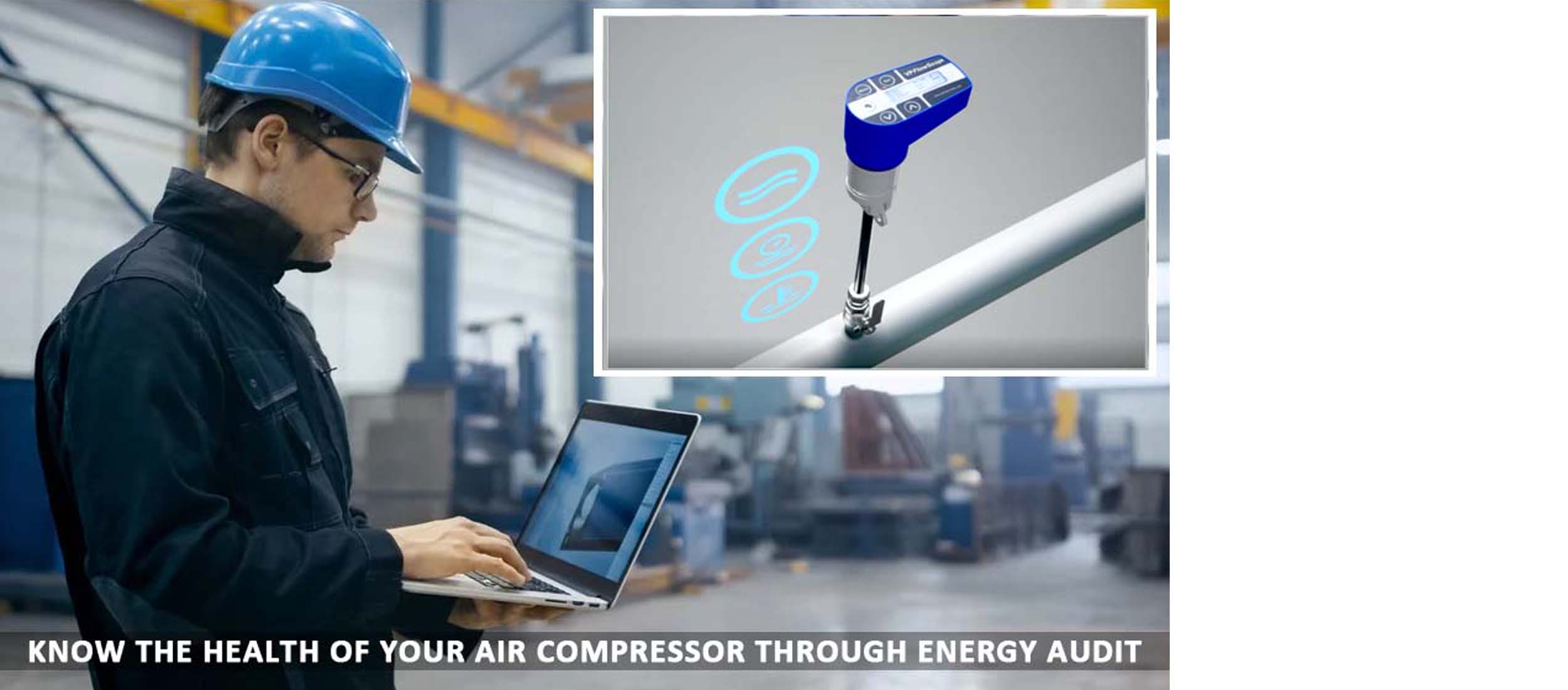
Measuring the Free Air Delivery (FAD) of an air compressor can be challenging. With a proper flow meter and some mathematics this task is manageable.
The ultimate job of an air compressor is to produce compressed air by sucking in ambient air, pressurizing or compressing it, and discharging it into the compressed air network. Air compressor power is defined by its power rating and the FAD specifications stated by the manufacturer when new. However, as time goes by, an on-site measurement can be very useful. There are several simple questions, which eventually explain the performance of an air compressor:
- How much electrical power is my air compressor consuming?
- How much electrical power is my air compressor consuming?
- What's my pressure profile?
To answer these questions, you may want to measure your air compressor on your own. Performance measurements usually comes into two types:
- Temporary performance measurement, done as part of system assessments, or before investing in a new air compressor.
- Permanent performance measurement, which is performed to monitor the performance at all times in order to trigger services or overhauls timely.
How is FAD Defined?
Flow is measured in volume per unit of time. But air can be compressed easily and its volume changes with the temperature. Meanwhile, the air that an air compressor sucks in contains humidity (water vapor), and the air density (air per m3) changes with variation in the altitude, temperature and weather patterns
Clause 3.4.1 of ISO1217 states: “Actual volume flow rate of a compressor is the actual volume of gas, compressed and delivered at the standard discharge point, referred to conditions of total temperature, total pressure and composition prevailing at the standard inlet point.”
This is the actual volume of air delivered by the air compressor referred back to the conditions of the free air at the compressor inlet. So FAD is the amount of free air drawn into the compressor that is actually delivered by the air compressor at its compressed air outlet.
FAD uses volumetric flow units such as m3/min and l/s etc. The types of flow meters allowed by ISO 1217 initially calculate a mass flow of air, which is then converted to an intake volume flow rate based on a value for the density of the air at the intake to the air compressor. Ideally these are the actual conditions, but for convenience, ISO 1217 suggests the following conditions, provided the actual conditions are within an allowable tolerance:
- Pressure = 1 bar absolute
- Temperature = 20 °C
- Relative humidity = 0%
Corrections are then made for the intake humidity and the speed of the motor compared to its rated speed.
What Affects the Efficiency of an Air Compressor?There are a couple of parameters that affect the efficiency of air compressors.

Air compressor manufacturers measure the performance of air compressors according to international standards (i. e., ISO 5389 for centrifugal air compressors) and describe the results in their data sheets. However, these measurements are performed in the factory conditions and not real on-site conditions.
Moreover, the performance of the air compressor may degrade over its life-time and an overhaul might be required. To judge the performance of an air compressor, an on-site measurement is recommended. Further, an active measurement such as real-time monitoring is very important for real-time performance estimation of air compressors.
The discharge flow of an air compressor contains air, water, oil and particles. Some measuring methods fail because they cannot handle water and oil in the flow. Others are not suitable because they cause a pressure drop, which in turn, leads to a waste of energy and money.

The requirements for a flow meter used at the compressor discharge include:
- Resistant to particles
- Resistant to water and oil drops
- Ability to handle high velocities and temperature up to 150 deg C
- Minimal pressure drop, better no pressure drop
- Insertion-type flow meter suitable for temporary measurement
An air compressor user should insist on measurement at the outlet to determine the performance. Of importance is what comes out and not what goes in!
The discharge flow measured by a portable flow meter must be computed into FAD with additional measurements on the operating temperature and operating pressure.
The so-calculated FAD is what the air compressor “really” delivers.
Quite often, amperes alone are thought to be an accurate measurement of kilowatts (kW), which is then used to calculate full-load specific power (m3/min/kW) or to estimate flow (m3/min) of an air compressor. This is incorrect!
A correct power measurement requires amperes and voltages measured at all three phases of the air compressors using a power meter, which can calculate the power factor. The power equation is as follows:
kW = (A x V x 1.732 x PF) / 1000- kW = Input kilowatts
- A = Motor current (amperes)
- V = line voltage
- PF = Power factor
Performance measurement of air compressors is important. By having permanent monitoring on the compressed-air system, you will realize even more benefits.
The key is to perform predictive maintenance so that components are serviced before they fail. Also, keep track of the energy consumption to ensure the investment will pay off in a very short time. Combined with regular leak surveys, these factors will allow you to enjoy a healthy and efficient compressed-air system.

As PNEUMSYS is regularly executing audit services for reciprocating and screw compressors both for lubricated and non lubricated compressors,
A sample audit report of an actual project is available for download below.
The privacy and confidentiality of the client has been obscured to protect their identity for obvious reasons.
